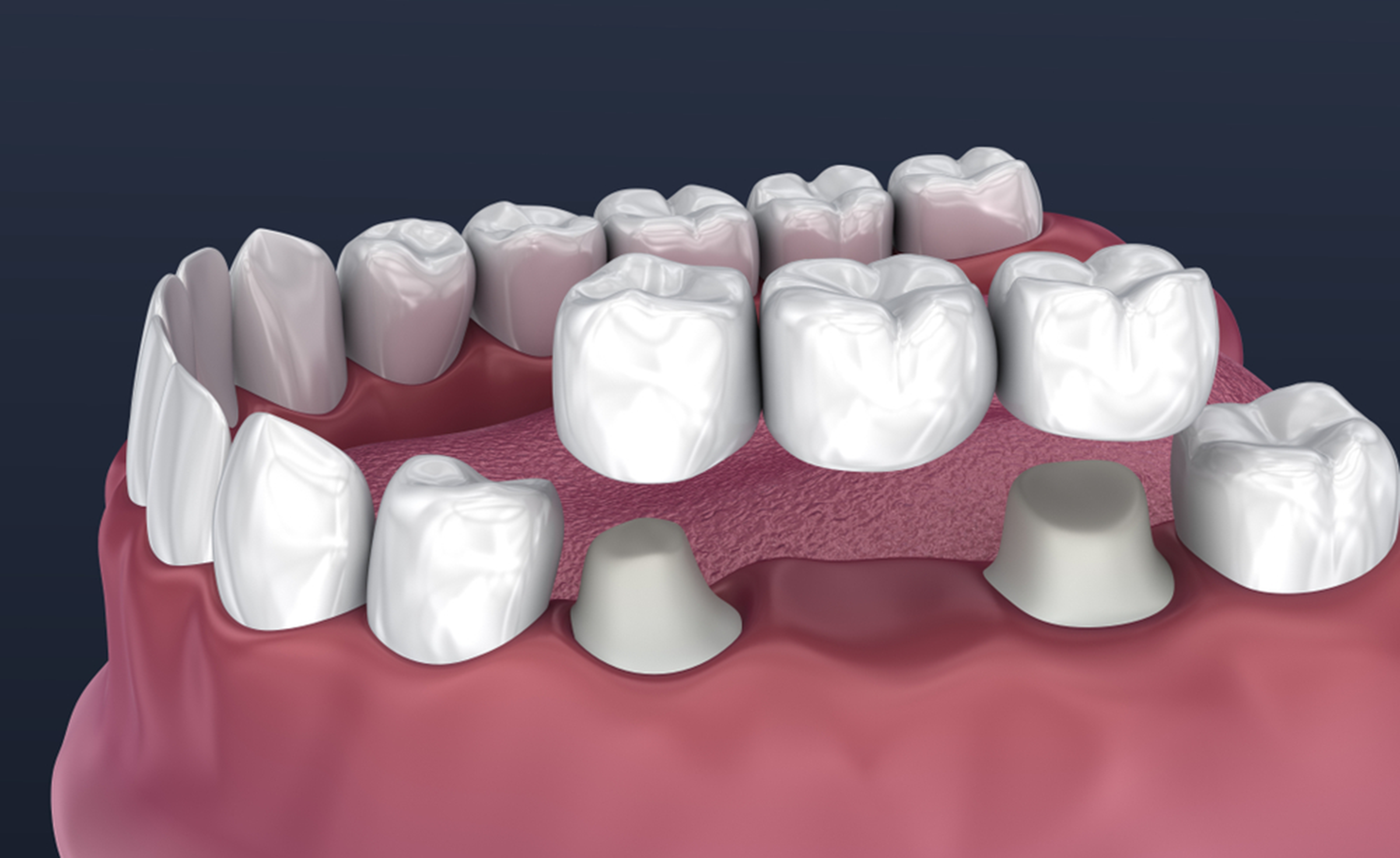Dental crowns and dental bridges in La Crete are two of the most versatile and transformative options in your dentist’s toolbox — especially when combined. Here’s an introduction to the purpose and process of getting dental crowns and dental bridges near you. With this information in hand, make an appointment with a dentist near you to discuss whether getting a bridge or crown (or both!) can help you to achieve your cosmetic dentistry goals and to restore your dental needs and health.
Why you should consider dental crowns
The five most common reasons you may require dental crowns in La Crete include:
- To replace missing teeth by being attached to a dental implant
- To protect a tooth that has undergone a root canal to eliminate serious infection
- To restore the structural integrity of a tooth weakened by cracks, cavities, large fillings or injury
- To anchor traditional dental bridges to replace missing teeth
- To cover and perfect the appearance and shape of badly discoloured or misshapen teeth
Crowns are designed and crafted by the team at Twilight Dental not just to perform their required functional role, but also to sit naturally in your jaw without looking like an artificial dental restoration. Dental crowns near you can be used anywhere in your mouth, including in prominent locations in your “smile” or “social” zone. In recommending and designing dental crowns for you, your dentist in La Crete will keep cosmetic concerns in mind to make sure that your crowns match the colour, texture and shine of your healthy natural teeth.
Dental crowns are made from metal alloys, porcelain, ceramic materials and combinations of those materials. Each material (and combination of materials) offers different advantages and disadvantages, including varying levels of strength, durability and capacity to withstand high biting forces and pressures. Choosing the right material is based on two especially important criteria: where the crowns will be put in your mouth (front teeth vs molars, for example); and what the crowns need to accomplish (covering a discoloured tooth or anchoring a crown, or both, for example).
Why you should consider dental bridges
You should consider getting dental bridges if you’re missing one or more, but not all, your teeth in one jaw. Dental bridges accomplish three essential things simultaneously: they repair the appearance of a smile with gaps due to missing teeth; bridges restore your ability to eat and chew naturally, and bridges prevent teeth around the gaps in your smile from twisting or shifting out of position. There are several different types of bridges, meaning your dentist in La Crete can recommend exactly what you need to help you achieve your goals. Here’s a quick introduction to each.
Traditional dental bridges fill gaps in your jaw by holding artificial teeth in position in a structure anchored on abutment teeth on either side of the gap. Those replacement teeth are called pontics; traditional bridges are held in place by dental crowns placed over the top of teeth on each side of your gap. A dental bridge can support one or more pontics. To receive those crowns and to support the bridge, your abutment teeth need to be modified by the removal of a thin layer of enamel.
A cantilever bridge works in almost exactly the same way as a traditional bridge, except that cantilever bridges use one or more crowns on just one side of the gap being filled rather than both sides.
Resin-supported bridges don’t require crowns but support one or more pontics in a structure attached to the rear of the abutment teeth using special dental resins. Resin-supported bridges lack the stability of a bridge that relies on dental crowns, so they’re more appropriate for replacing missing teeth in the front of your mouth rather than replacing molars.
Implant-supported bridges are a game-changer. The three alternatives discussed above feature varying levels of stability and are, in fact, very stable and effective. Having said that, there is no alternative as stable, strong or durable as an implant-supported bridge. What makes them so stable? The fact that the bridge is held in place by implants rooted directly into your jaw. The bridge does not rely on modified natural teeth or the strength of dental resin but on the anatomical structure of your jaw itself.
